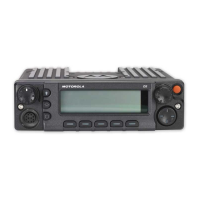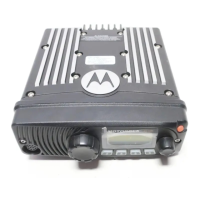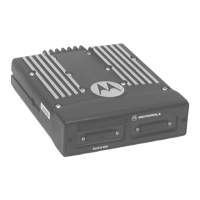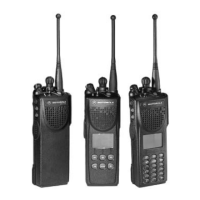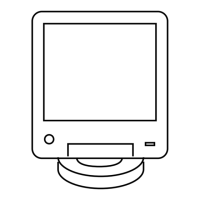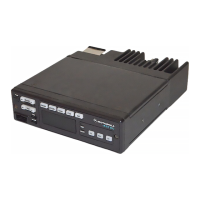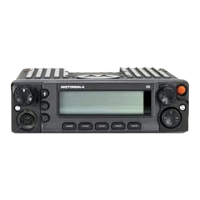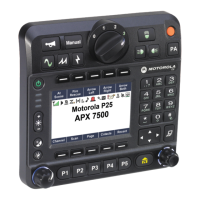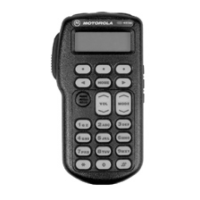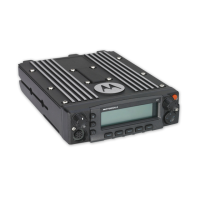Do you have a question about the Motorola ASTRO XTL 2500 and is the answer not in the manual?
Details Motorola's copyright protection for computer programs within their products.
Outlines restrictions on duplicating or distributing the manual without permission.
States Motorola's limitations of liability and right to change products.
Provides an overview of the ASTRO XTL 2500 Digital Mobile Radio and its frequency ranges.
Explains the main components of the radio system: the radio unit and control head.
Covers basic operations like turning the radio on, setting volume, and using controls.
Details features like keypad microphone option, modes, programming, and display status.
Describes the various audible alert tones and their meanings.
Explains support for up to two M5 control heads and configuration options.
Enables all connected control heads to operate concurrently.
Allows only one control head to be visibly active at a time.
Enables communication between users at different control heads.
Covers accessing fundamental radio functions like selecting modes and transmitting.
Instructions for changing the active zone or mode on the radio.
Explains how to program and use the Mode Select button.
Details on how to select the home mode within the radio's configuration.
Procedures for transmitting in conventional and trunked modes.
How to monitor channel traffic by defeating coded squelch.
Guidance on adjusting the radio's squelch level for better reception.
Overview of frequently accessed radio features.
Covers initiating emergency calls, alarms, and related procedures.
Details on how to use the scan feature, including list programming.
Instructions for initiating and receiving telephone calls via the radio.
Procedures for sending and receiving call alert pages.
Describes features available for conventional radio operations.
How to send status calls to inform the dispatcher of unit status.
Explains the Smart PTT feature for better radio operation control.
Defines talkgroups for conventional systems and their management.
Instructions for direct mobile-to-mobile communication.
Details on making and receiving selective calls with other units.
Overview of features applicable to trunking radio systems.
Enables private conversations heard only by involved parties.
Describes the failsoft mode for continued operation during system failure.
Allows temporary reassignment of units into groups for communication.
Feature extending communications beyond a single site for wide-area coverage.
Provides automated data application registration for the radio.
Allows users to associate with the radio for data applications.
Details on sending and receiving text messages using the TMS service.
Overview of features related to secure encryption on the radio.
Covers receiving and transmitting private messages securely.
Discusses system constraints and loss indication for secure modes.
Guides on selecting encryption keys and indices for secure communication.
Lists approved antennas for the XTL 2500 mobile radio.
Includes bull horns, microphones, and speakers as optional accessories.
Lists various cables and mounting kits for radio installation.
Covers other accessories like emergency footswitches and key lock mounts.
Information on emergency and non-commercial channels in VHF.
Procedure for sending distress calls on VHF Channel 16.
Guidance on using VHF Channel 9 for non-commercial transmissions.
Details FCC requirements for shipboard radio operation.
Details the terms, duration, and coverage of the product warranty.
Information on obtaining warranty service and optional service plans.
